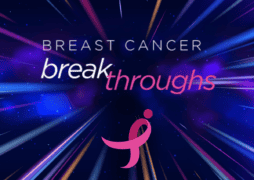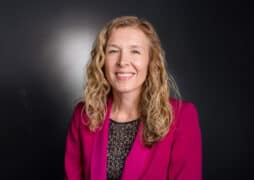Despite all of the progress the breast cancer research community has made over the past four decades, one tragic fact remains true for those living with metastatic breast cancer (MBC), or breast cancer that has spread beyond the breast and surrounding lymph nodes to other parts of the body– treatment resistance will eventually occur. That’s why overcoming treatment resistance and more effectively treating metastasis are the top priorities for Susan G. Komen and the researchers we fund.
One such researcher is Chuck Harrell, Ph.D, a Komen grantee and Associate professor at Virginia Commonwealth University and a researcher at VCU Massey Cancer Center who leads a team of researchers who are focused on treatments for MBC. He and his colleagues are seeking to better understand why people with triple negative breast cancer that has metastasized develop drug resistance. Dr. Harrell recently spoke with Komen about what he’s learning in the lab about resistance and new MBC therapies that are showing promise.
Q: Based on your and your colleagues’ research, do you have any initial ideas as to why treatment resistance occurs?
A: Over the past few decades we have learned that there are many ways that cancer cells become resistant to drugs. More recently we have gained a better understanding into how there are many different types of cells within a tumor. Some of those cells you can easily kill with certain drugs/therapies, but some of the cells do not respond to the drugs. They kind of eat up the drug and continue growing.
The cells that survive those initial treatments repopulate the tumor and create a tumor that is full of all those drug-resistant cells. Currently in labs around the world, there is a major effort underway to generate data using single-cell level technologies. These studies are providing new insights into how different tumor cell subpopulations increase or decrease in abundance when treated with drugs.
Q: Why is it important?
A: A typical tumor biopsy combines 10,000 to 1,000,000 cells that are combined for genetic testing. But if you can look at each one of those cells, individually, you can see that there are a lot of differences between them. In fact, you might even see two or three major populations/subtypes of breast cancer in a single tumor!
We are trying to learn about how many different cell types there are in a tumor so we can develop therapeutics, or identify existing therapeutics, that can work to kill each of those different cell subpopulations. The more information we can get about a tumor the better we can design the therapeutics to target all those multiple populations, instead of only targeting one.
Q: What have you seen in the lab that has helped you target drug-resistant tumors?
A: Many of the resistant tumors have clinically actionable mutations. For example, some tumors have a mutation in a gene called PI3-kinase. Knowing this, we can administer drugs that target the PI3-kinase mutations and see their effectiveness. At the same time, we know that single drugs are rarely given to a patient, especially for the duration of their treatment. When you give one drug, the cells that have that mutation may die, but the cells that don’t have that mutation proliferate and start to grow and take over.
So, what we are trying to do is identify new synergistic drug combinations. That means when you have two drugs, and you put them together, they work better than just adding the two drugs together – the combination is greater than the sum of its parts. It’s like a multiplicative or exponential type of effect. For these tests, we give or treat cells with a PI3-kinase drug and add in one drug at a time to figure out, of these 1,300 drugs we’re testing, those that are the best combination. By doing this test with a large enough set of patient-derived cells we are seeking to find a common set of drugs that might work well for people with actionable mutations, i.e. tumors with mutations where targeted treatments are available.
Q: And have you found a sequence or combination of drugs that works best?
A: That is the really tough part. We are first trying to determine which of these drugs might work well together. And then if we find the drugs that work well together, which two doses of those two drugs do we need? And so, we have to test many doses of drug one, many doses of drug two, and then test how varying the scheduling of the combination effects outcome. That’s why clinical trials are so important. That’s where we’ll find out which drug should come first, do we sequence the drugs, do we administer all of drug one, and then all of drug two? And then do we go back to drug one?
We have some good candidates of drugs and drug combinations that we are excited about. We are hoping we can generate enough preliminary data to start a clinical trial based on these Komen funded studies. We’re really hoping to be there within the next 12 months.
Q: And how do you keep the patient’s voice and perspective front and center in your work?
A: We’ve been fortunate over the past six years to work with five patient advocates, some with no evidence of disease, and one who, unfortunately, died of chemotherapy-resistant metastatic disease. It was during our interactions with that patient that we became very interested in drug resistance and how to overcome it. Another patient advocate told me early on that the things we do in the lab we cannot always do in people. She said, “Maybe you can treat the mice with 10 drugs, but I’m not gonna take 10 drugs at once.” Having a patient’s perspective and the opportunity to learn from patient advocates is really important. It helps you with seeing a face or hearing a voice behind the work you do in the lab every day.



